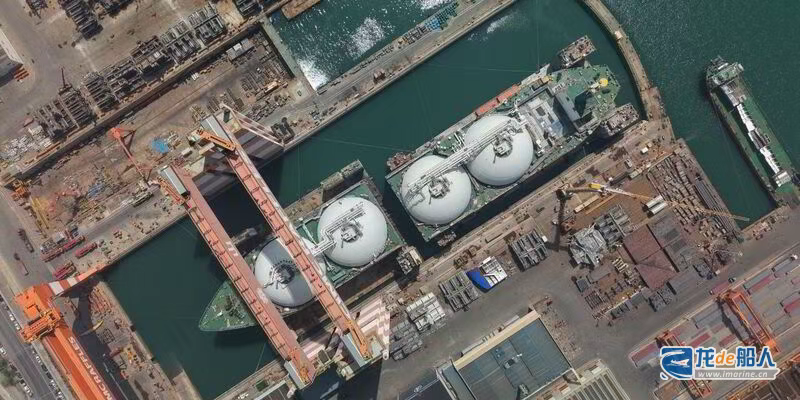The conversion of the $2.2 billion floating liquefied natural gas production, storage and offloading (FLNG) unit Fuji LNG is underway.
According to photos posted on social media by Morten Skjong, chief technology officer of FLNG operating giant Golar LNG, the 148,500 cubic meter Moss-type LNG carrier “Fuji LNG” was cut into two parts two weeks ago, marking the official start of the conversion project, which is expected to be delivered in the fourth quarter of 2027.
Morten Skjong said, “The cutting was a key operation that enabled the innovative design of the Mk II to be realized with the addition of the new amidships area between tanks 2 and 3. This area will house the liquefaction unit and the original tanks will be reattached to the sides to provide storage space.”
It is understood that FLNG can directly liquefy and store the extracted natural gas in sea areas far away from land, and then unload it to LNG tankers to transport it to all parts of the world. It is one of the most complex, most expensive and most value-added products in marine engineering equipment, and can be called the “new jewel in the crown” of the shipbuilding and offshore engineering industry.

In 2003, Golar LNG purchased the Moss-type LNG carrier “Fuji LNG” from TMS Cardiff Gas, owned by Greek shipping magnate George Economou, for US$73 million, and it was designated to be converted into FLNG. The total budget for the conversion project is US$2.2 billion, including conversion costs, shipyard supervision, spare parts, crew, training, emergency costs, initial fuel supply, and voyage-related costs to transport FLNG to the operating location, excluding financing costs.
According to public information, “Fuji LNG” is 289.5 meters in length, 49 meters in beam, flying the flag of the Marshall Islands, and was built and delivered by Kawasaki Sakaide Works of Japan in 2004, with an age of 20 years.
On September 17, 2024, CIMC Raffles signed a FLNG EPC conversion contract with Golar LNG for the Fuji LNG worth US$1.6 billion (RMB 11.634 billion), marking a major breakthrough for CIMC in the field of high-end offshore manufacturing. The contract signed on the same day also includes an option order for one vessel, which, if effective, is expected to be delivered in 2028.
It is reported that the “Fuji LNG” to be converted into FLNG adopts the Golar MK II design, which is an evolution of the MK I design of FLNG Hilli and FLNG Gimi, and is also based on the conversion of existing LNG carriers to FLNG. The Golar MK II design can realize the modularization of the construction process and further improve efficiency and operability based on the experience of existing FLNG asset construction and operation.
The MK II FLNG is approximately 390 meters long and 70 meters wide and is expected to produce up to 3.5 million tons of LNG per year.
In addition to the “Fuji LNG” which is currently being converted, Golar LNG has received the “FLNG Gimi”, which was converted from the LNG carrier “Gimi”, from the Keppel Shipyard under Singapore’s offshore engineering giant Seatrium at the end of 2023 at a cost of US$1.3 billion. In related news, Golar LNG secured US$1.2 billion in financing for the FLNG Gimi in March of this year, which is expected to close in the second quarter of 2025, with a 12-year lease term and 17-year amortization period, to be repaid in quarterly installments throughout the lease term.
In addition, Golar LNG has sold the last LNG carrier in its fleet earlier this year, completely exiting the LNG shipping business and focusing on the operation of FLNG infrastructure in the future.


